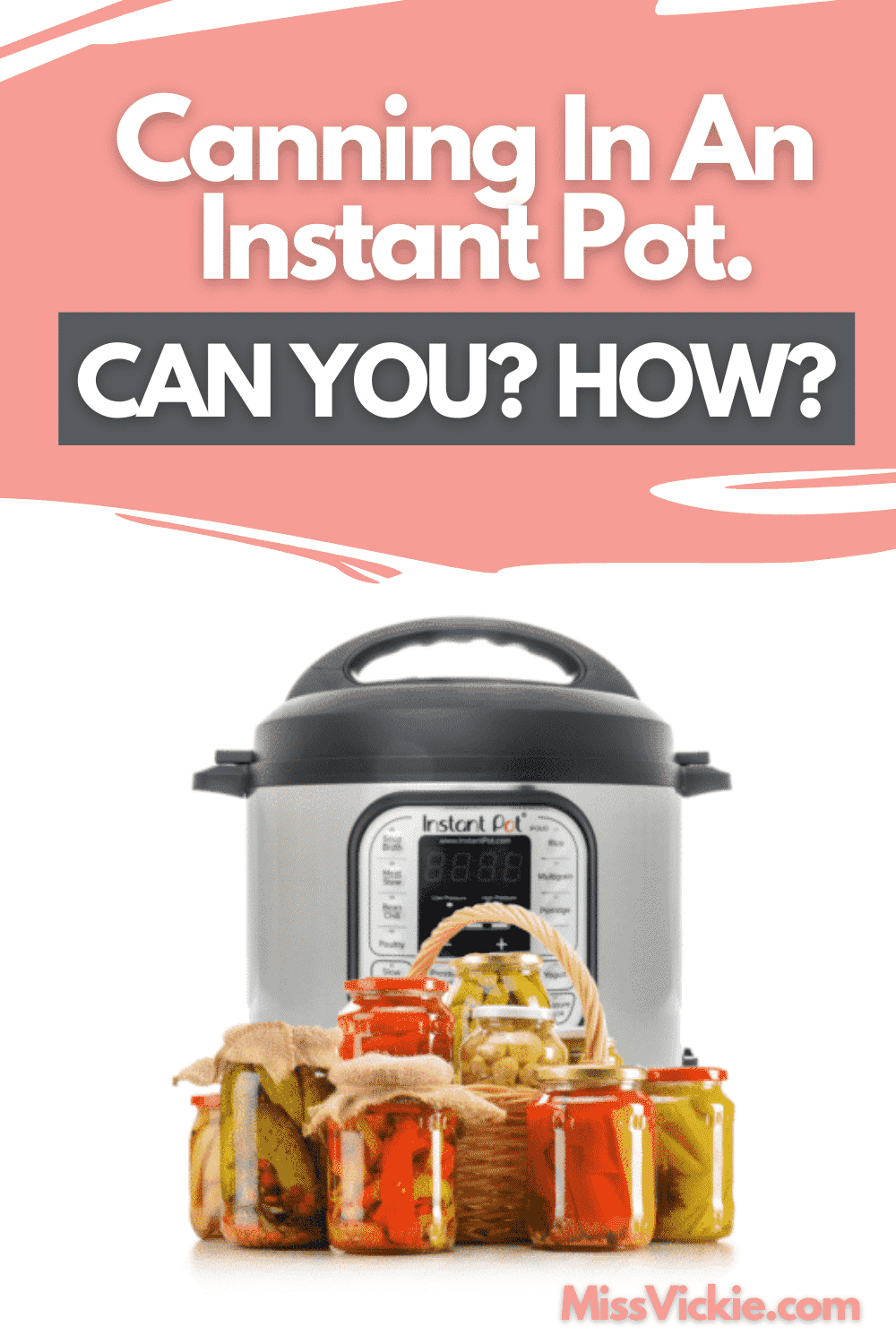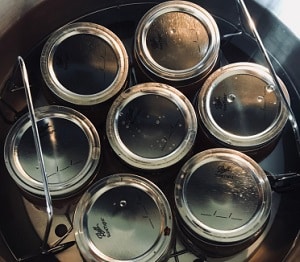
DISCLOSURE: This post may contain affiliate links, meaning when you click the links and make a purchase, I receive a commission. As an Amazon Associate I earn from qualifying purchases.
If you’re already a fan of canning and the proud owner of an Instant Pot MAX, then it’s time to explore the wonderful world of pressure canning and bath canning.
Each type of canning is better suited to a particular food group, fruiting fantastic results either way. Acidity largely determines which method you use, but more on this soon.
Let’s take a close look at canning in an Instant Pot and how you can start preserving all your favorite foods.
WARNING: Only Instant Pot MAX has the Pressure Canning Feature to ensure safety. Other Instant Pot models might not guarantee to reach the temperature long enough to achieve the destruction of botulism spores.
Can You Do Canning In An Instant Pot?
Water Bath Canning

Water bath canning is the correct method for foods with high acidity. All food measuring lower than 4.6 PH is suitable for water bath canning.
The acidic nature of fruits, berries, and pickling vinegar kills off bacteria that would otherwise turn the preserve rancid.
Boiled water bath canning is the least complicated way to make pickles, jams, and other shelf-stable preserves.
How To Use Your Instant Pot For Water Bath Canning

1. Clean and rinse your canning jars before sterilizing them by boiling each in a pot of rapidly bubbling water and vinegar. Your Instant Pot is perfect for sterilization; be sure to wash it out thoroughly afterward.
2. Fill your Instant Pot with a 50/50 blend of white vinegar and water. Pack in as many canning jars as will fit comfortably and close the lid. Allow the steam cycle of your pressure cooker to run for a minute.
3. Top up your Instant Pot with vinegar and water. Fill up your hot canning jars with your choice of jam, pickles, or preserves, filling to a quarter-inch from full.
Clean the rims and seal tightly, feeling for pressure as you close the top.
4. Place the filled canning jars into your Instant Pot. Start a pressure cooking steam cycle and start watching your floating valve. As soon as it rises, run your timer.
5. Let your water bath canning cycle run for however long is needed depending on the food you’re canning. Once done, allow the pressure to subside and open up when the valve lowers.
6. Open your Instant Pot, remove the canning jars and place them on a cooling rack for at least 12 hours before opening
Pressure Canning
If you’re fortunate enough to be the Instant Pot Max owner with a built-in canning feature, then consult your manual for easy instructions. Instant Pots with canning are invaluable to anyone who cans and pickles frequently.
Even though the FDA disapproves pressure canning with an Instant Pot, claiming that a high enough degree of bacteria isn’t guaranteed to be destroyed, improvising is possible but highly inadvisable.
Unfortunately, unless an Instant Pot was made for the canning, it doesn’t reach a high enough pressure to ensure food safety.
[amazon box=”B077T9YGRM”]
Try A Pressure Canner
If you want to can non-acidic foods and meat, then you’ll need a specialized pressure canner. Anything with a PH of 4.6 or higher is suitable for pressure canning.
Only a dedicated unit will be able to sustain rigorous use while keeping temperatures and pressure stable. Pressure canners guarantee that harmful bacteria can’t contaminate your food.
How To Use Your Instant Pot For Pressure Canning
If you’ve decided that you want to can low-acid food in your Instant Pot MAX, then you’re in for one super-long process.
The USDA Complete Guide to Home Canning sets the boiling time for low PH food at a whopping 11 hours or more if you’re water bath canning something with little to no acidity in your cooker.
That’s a massive time and energy expenditure while putting excessive strain on your electric pressure cooker as well.
Beware Of Manufacturer Recommendations
Certain pressure cookers will list preserving instructions in the user manual.
Despite manufacturer claims, USDA processing times are far more stringent than in some countries. The altitude difference also makes a considerable impact on canning.
While we consider things like marmalade, fruits, and other acidic foods safe, there are certain foods we strongly advise against.
Preserving vegetables, meat, milk, various grains, tomato or tomato products, or seafood in anything other than a pressure canner is dangerous.
Improper Canning Dangers
Improperly canned food can cause a potentially fatal germ called Clostridium botulinum to thrive.
The bacterium barely has a chance to cause infection unless concentrated through unsanitary canning. Consuming dangerous preserves comes with the risk of contracting Botulism.
Double vision, blurry sight, heavy/drooping eyelids, speech problems, swelling of the throat, dry mouth, and even total paralysis are potential symptoms. If left untreated, Botulism can kill you.
Don’t Risk Canning Meat, Seafood, And Veggies
Instant Pots MAX are ever-versatile and work great for canning low-acid foods. Don’t take the risk with anything else.
Those new to canning can get used to the process with their electric pressure cooker before moving onto dedicated hardware.